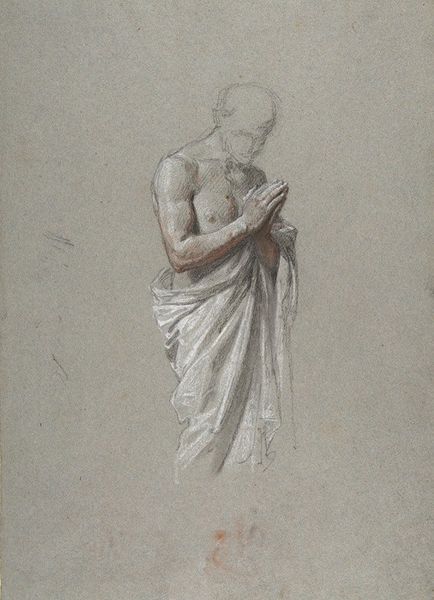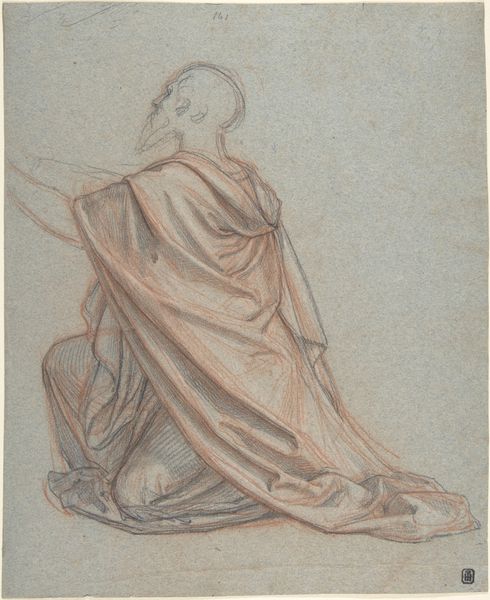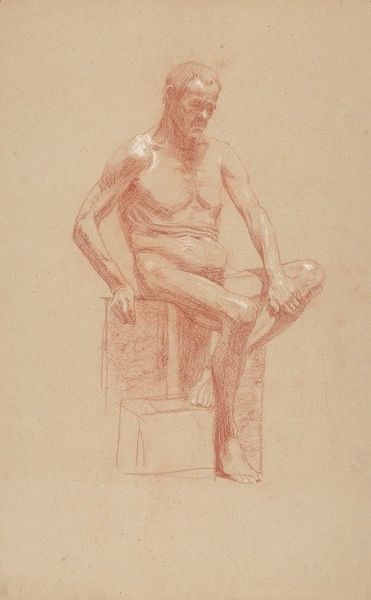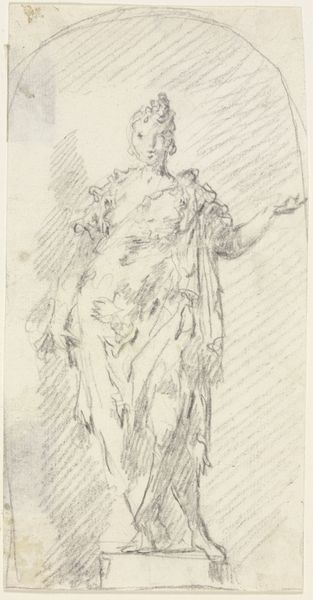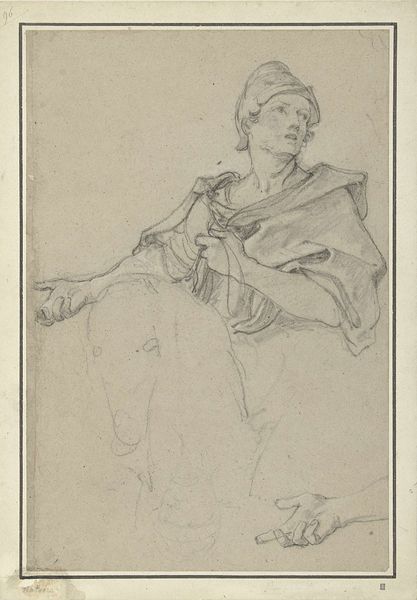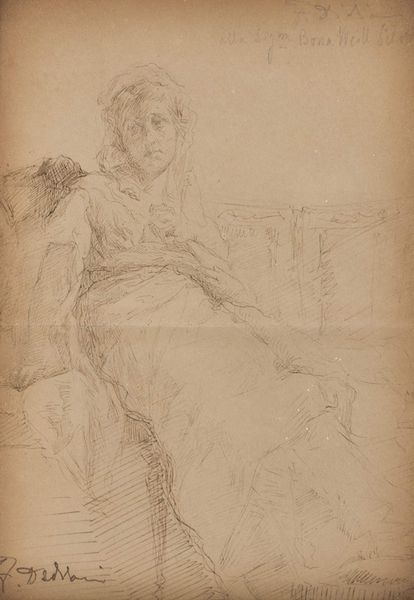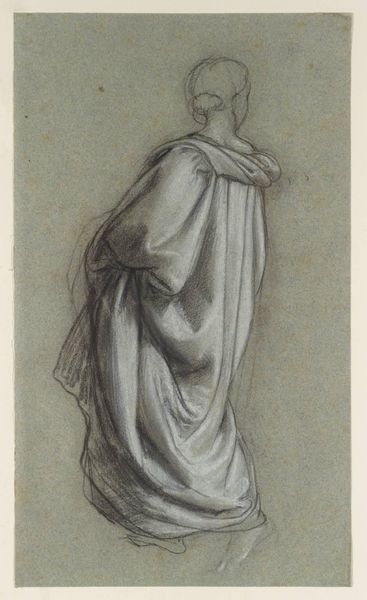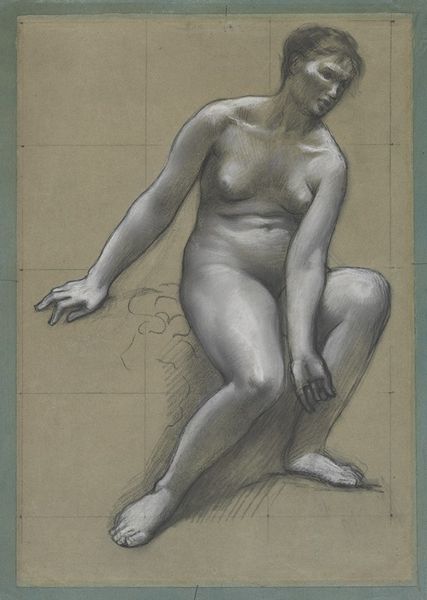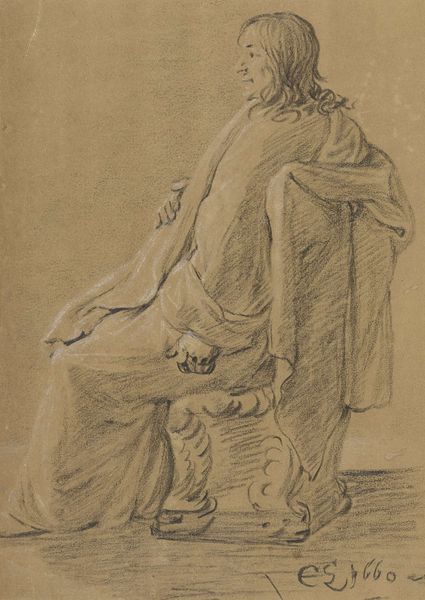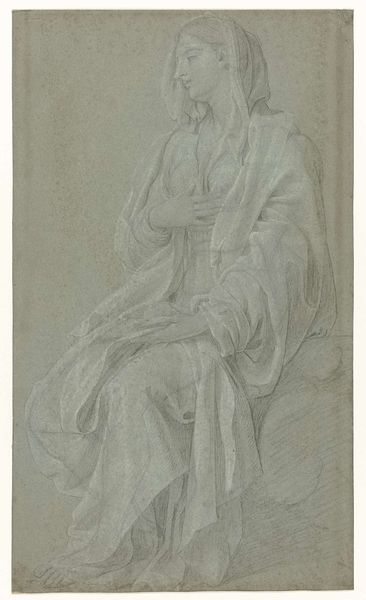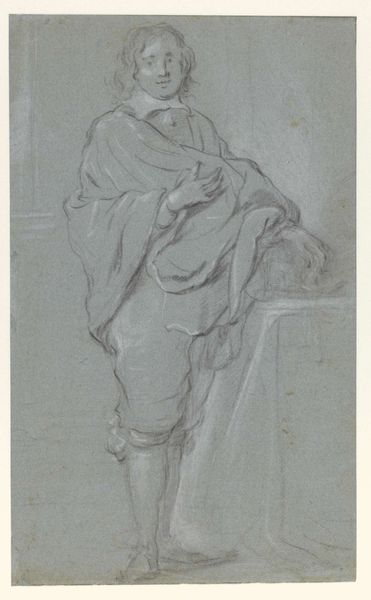
drawing, pencil, graphite
#
portrait
#
drawing
#
pencil sketch
#
charcoal drawing
#
figuration
#
pencil drawing
#
pencil
#
graphite
#
academic-art
#
graphite
Copyright: Public Domain: Artvee
Curator: Let’s take a look at “Seated Bearded Man, Nude to the Waist,” a pencil and graphite drawing from around the 19th century, created by Isidore Pils. What strikes you first about it? Editor: The pose! He is so incredibly relaxed, almost nonchalant. It feels very intimate, as if we’ve stumbled upon him in a moment of private repose. Curator: Note the medium, though—the texture of the graphite on the paper. The grain creates a beautiful range of tone. It’s an academic study, a material exploration just as much as it is an exercise in rendering the human form. Look how the artist explores the draped fabric and tassels— Editor: Yet, there's something more profound at play, I think. Beards, historically, have carried so much symbolic weight, connoting wisdom, authority, masculinity... The figure is presented bare-chested but retains this emblem of power. What does that contrast suggest? Curator: It’s interesting you see "power." The nude, especially in academic art, was often a vehicle for social elevation. This artist engages directly with those tropes by choosing graphite. It can feel disposable, and I would argue, here suggests a mass reproducibility and consumption of bodies. It undermines that older conception, that claim of ‘power.’ Editor: But doesn’t that ease hint at an underlying power? He isn’t presenting for us. The direct, unwavering gaze, regardless of pose, confronts the viewer. What does that unflinching presentation of self communicate? Is it defiance, self-assurance, resignation? Curator: And defiance is shown here by Pils' deliberate exploitation of graphite and sketching. Mass reproducible portraits challenge conventional oil paintings by bringing images and themes into wider circulation. The materials were deliberately democratizing, and reflect wider societal tensions around industrial methods during that time. Editor: Right, but that reading overlooks a key aspect: timelessness. While Pils’ may have embraced more modest media, the man in the drawing becomes archetypal. He’s simultaneously present in the 19th century, yet reflective of classic historical themes. Curator: Pils challenges standard workshop models with that use of common materials. The work critiques academic norms that defined artistic creation as restricted and precious. Editor: Indeed. The visual cues serve not only an era’s representation, they connect us to a lineage of archetypal representation of strength and introspection that stretch back into time. Thank you for shedding some light on the tension that reveals. Curator: Absolutely! Focusing on production and medium reveals hidden political agendas of making art for specific social consumption, I believe. Thank you.
Comments
No comments
Be the first to comment and join the conversation on the ultimate creative platform.

